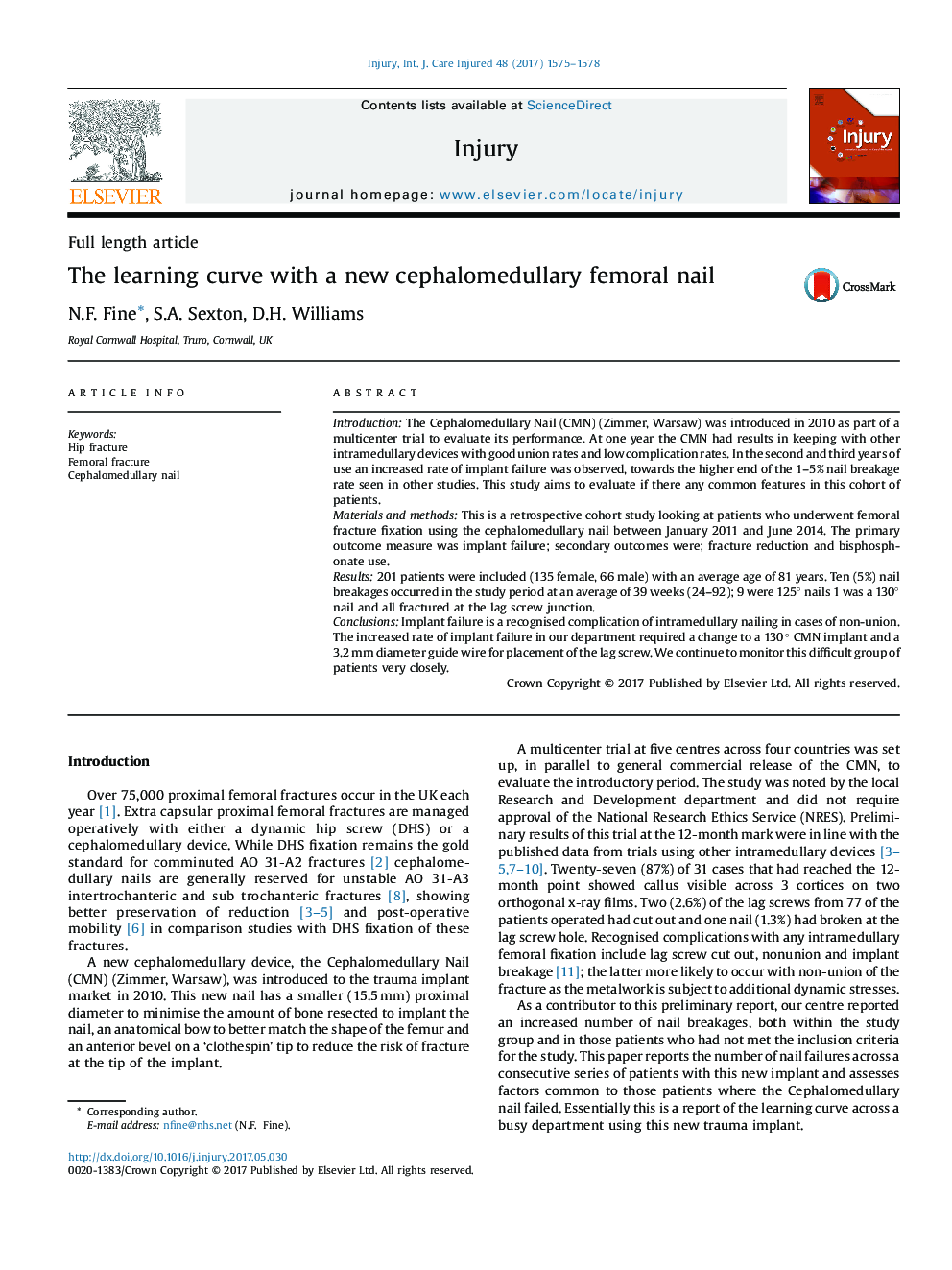| Article ID | Journal | Published Year | Pages | File Type |
|---|---|---|---|---|
| 5653113 | Injury | 2017 | 4 Pages |
IntroductionThe Cephalomedullary Nail (CMN) (Zimmer, Warsaw) was introduced in 2010 as part of a multicenter trial to evaluate its performance. At one year the CMN had results in keeping with other intramedullary devices with good union rates and low complication rates. In the second and third years of use an increased rate of implant failure was observed, towards the higher end of the 1-5% nail breakage rate seen in other studies. This study aims to evaluate if there any common features in this cohort of patients.Materials and methodsThis is a retrospective cohort study looking at patients who underwent femoral fracture fixation using the cephalomedullary nail between January 2011 and June 2014. The primary outcome measure was implant failure; secondary outcomes were; fracture reduction and bisphosphonate use.Results201 patients were included (135 female, 66 male) with an average age of 81 years. Ten (5%) nail breakages occurred in the study period at an average of 39 weeks (24-92); 9 were 125° nails 1 was a 130° nail and all fractured at the lag screw junction.ConclusionsImplant failure is a recognised complication of intramedullary nailing in cases of non-union. The increased rate of implant failure in our department required a change to a 130 ° CMN implant and a 3.2 mm diameter guide wire for placement of the lag screw. We continue to monitor this difficult group of patients very closely.
